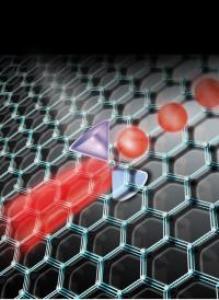Researchers at Columbia Engineering have discovered the optical nonlinear property of graphene that could pave the way for low-power telecommunication devices. Silicon-based photonic circuits are passive systems.

Graphene on Silicon photonic crystal nanomembrane(Credit: Nicoletta Barolini)
The team demonstrated that the incorporation of a one-carbon-atom-thick graphene sheet could make a photonic circuit active by facilitating parametric wavelength conversion and generation of microwave photonic signals. The study’s lead author, Tingyi Gu, stated that development of the graphene-silicon hybrid photonic chip is a significant step towards building efficient and faster telecommunication systems. Optical nonlinearity is the key feature for memory and switching employing two-state digital on-off. Tingyi Gu added that graphene provided enhanced optical nonlinearity.
The graphene-silicon device is built in such a way that the optical nonlinearity allows the wavelength conversion and transmittance to vary with the input power level. Through the study, the researchers found that the modulation of the radio frequency carrier generated by triggering the thermal and electronic response of the silicon-graphene device using a laser beam could be controlled with the color and intensity of the laser beam. By tuning the frequency of the radio signal using different optical frequencies, the team achieved a resonant quality factor that is lower than that of silicon circuits by 50 times.
The study sets the tone for future ultra-low power optical telecommunications.
Disclaimer: The views expressed here are those of the author expressed in their private capacity and do not necessarily represent the views of AZoM.com Limited T/A AZoNetwork the owner and operator of this website. This disclaimer forms part of the Terms and conditions of use of this website.